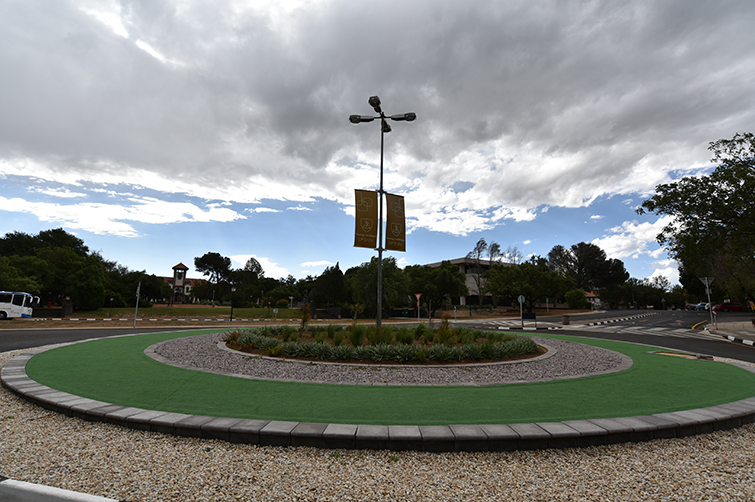03 February 2020
|
Story Cobus van Jaarsveld
|
Photo Charl Devenish
 The Department of Protection Services shares how to #BSafe at traffic circles.
The Department of Protection Services shares how to #BSafe at traffic circles.
For the majority of drivers, one of the most confusing driving laws is the correct use of a traffic circle, especially in Bloemfontein with the large number of smaller traffic circles constructed over the past few years; also across the University of the Free State (UFS) Bloemfontein Campus.
“In fact, many motorists do not know that there is a difference between a larger traffic circle and a mini traffic circle, other than their size. Can you really be frustrated if someone cuts you off at a traffic circle if you don't know the rules?
Arrive Alive has shed some light on the issue,” said Cobus van Jaarsveld, Assistant Director: Threat Detection, Investigations and Liaison in the UFS
Department of Protection Services.
What is the difference between the two circles?
A traffic circle is classified as large when it has a minimum diameter of about 16 metres and a 1,5 to 2 metre flattened kerb, which allows heavy vehicles to drive onto a small section of the circle. A mini traffic circle is normally not more than seven to ten metres in diameter and the entire circle is mountable for heavy vehicles.
Are there different rules for each?
Yes – the rule of thumb is that mini traffic circles, which are usually found in residential areas, have the same rules as a four-way stop – first come first served. For larger traffic circles, which are usually found at busy crossings to assist with the traffic flow, you must give way to the right.
Rules to remember at a large traffic circle
As you arrive at a large traffic circle, traffic coming from your right has right of way, regardless of how many cars there are. Wait until there is a gap in the traffic and then ease slowly into the circle. Watch out for other traffic in the circle and be aware that they may not be using their indicators.
Use your indicators
Signal when you are going to turn – switch your indicator on immediately after passing the exit prior to the one you intend taking. If you are taking the first exit, i.e. you're turning left, then flick on your left indicator and keep in the outside/left-hand lane. Keeping in the outside/left-hand lane also works well if you're continuing straight ahead, as your exit is very close. After you've passed the left-turn exit and yours is next, signal left and you're free. If you're turning right or performing a U-turn, keep in the inside/right-hand lane. Only signal left and change into the left-hand lane once you've passed the other exits and only yours is ahead.
Rules to remember at a mini traffic circle
The first vehicle to cross the line has the right of way, so it really works on the same principle as a four-way stop or yield sign. Proceed in a clockwise direction around the circle, without driving on it.